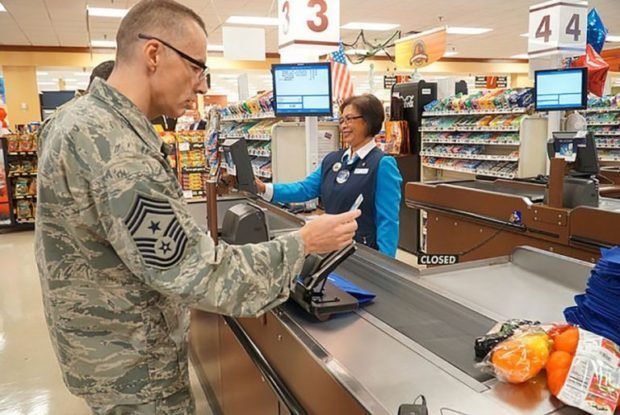Medal of Honor Monday: Air Force Col. Merlyn Dethlefsen
Most fighter-bomber missions meant to knock out enemy defense systems during the Vietnam War only involved one fly-by — the pilots knew there were few chances of escaping enemy aircraft if you executed more than one pass. Air Force Col. Merlyn Dethlefsen knew that when he took charge of a daring raid over a North Vietnamese steel plant in 1967, but he ignored the status quo to make sure the mission was a success. For that, he earned the Medal of Honor.
Dethlefsen was born in Greenville, Iowa, on June 29, 1934. As the son of a farmer and a schoolteacher, he did well at academics, graduating with honors from high school in 1951 when he was just 16.
Dethlefsen went to Iowa State University for about two years before deciding to join the Air Force in 1953. He started aviation cadet training the following year and was commissioned as an officer by the time he was 20.
During his first few years in the field, Dethlefsen served as a navigator on C-124 Globemaster transports before earning his pilot’s wings in 1960. Next, he served as a fighter pilot in Germany for about five years before coming back to the U.S.
At some point, he met his wife, Jorja, and they had two children — a daughter and a son. Dethlefsen also returned to college to earn a business degree from the University of Nebraska, Omaha.
The Vietnam War
In October 1966, Dethlefsen was deployed to a combat squadron in Thailand to be part of the aerial fight in the Vietnam War. He was 33 and on his 78th combat mission when he earned the Medal of Honor.
On March 10, 1967, then-Capt. Dethlefsen was serving with the 354th Tactical Fighter Squadron based out of Takhli Royal Thai Air Force Base. He and three other F-105 Thunderchief fighter-bomber pilots were tasked with what was known as a “wild weasel” — a pre-bombing mission of sorts to help a later, larger mission attain success.
Their target was the area around the Thai Nguyen Steel Plant, a heavily defended industrial complex about 50 miles north of Hanoi in North Vietnam. The plant was important to the North Vietnamese war effort and had just been approved as a U.S. target.
The goal of the four-plane team was to suppress the complex’s anti-aircraft defenses — surface-to-air missiles, anti-aircraft artillery and automatic weapons — long enough for a second strike force to destroy the plant without coming under heavy fire.
Unfortunately, the enemy was ready for them. When the four two-seater aircraft got to the area, the North Vietnamese shot down the lead plane and knocked a second out of the fight. The only missile fired at their target missed.
Not Giving Up
Dethlefsen, piloting the third aircraft in line, assumed leadership of the mission. Only he, his navigator, Capt. Mike Gilroy, and one other F-105 were left to carry out the plan.
Later in life, Gilroy described Dethlefsen as “taciturn, a born-again Christian, and not at all the typical fighter pilot,” saying he wasn’t exactly a fun guy. But none of that mattered — his serious demeanor was critical to the cause.
On the duo’s first pass at the target, they were hit with ground fire and then by a MiG-21, a Russian-designed fighter jet flown by the enemy. It was rare for pilots then to make more than one pass — if you wanted to live, you got out of the enemy’s range quickly, but Dethlefsen knew the mission would fail if he didn’t keep trying. So, he studied the pattern of the explosives, known as flak, launched by the enemy.
“It wasn’t a matter of being able to avoid the flak, but of finding the least-intense areas,” Dethlefsen later said.
At some point, another MiG hit Dethlefsen and Gilroy. It was common for pilots to drop all their ordnance when MiG’s attacked, but Dethlefsen kept his, knowing he would need it.
He then led the two planes on a few more close-range passes that damaged two surface-to-air missile sites. The strikes helped to protect the fighter bombers that were to follow them, as well as another sortie scheduled for the next day. Thanks to Dethlefson’s dedication, the mission succeeded in reducing the enemy’s ability to provide essential war materials.
“All I did was the job I was sent to do,” Dethlefsen later said. “It had been quite a while since we had been able to go into the Hanoi area, so while the weather held, we were able to do some pretty good work.”
Dethlefsen’s plane was so badly damaged that it couldn’t make the 500-mile trip back to their home base. Instead, he landed at Udorn Royal Thai Air Force Base, where the aircraft was patched up. Dethlefsen and Gilroy flew home the next day.
The Next Chapter
After his deployment, Dethlefsen returned to the U.S. and served as an instructor pilot at Vance Air Force Base in Oklahoma. Within months, he learned that he had earned the Medal of Honor for his courage during the steel plant mission. On Feb. 1, 1968, President Lyndon B. Johnson presented the medal to then-Maj. Dethlefsen during a ceremony at the White House.
Dethlefsen got his Master’s degree in psychology from Troy State University, Alabama, in 1972 but remained in the Air Force, serving in various positions until July 1977 when he retired as a colonel. According to the Enid News and Eagle, a newspaper out of Enid, Oklahoma, his family settled in Fort Worth, Texas, where he ran a small medical equipment business.
Unfortunately, he only got to enjoy civilian life for about a decade. Dethlefsen died on Dec. 14, 1987, at the age of 53. He is buried in Arlington National Cemetery.
This article is part of a weekly series called “Medal of Honor Monday,” in which we highlight one of the more than 3,500 Medal of Honor recipients who have earned the U.S. military’s highest medal for valor.
Source: Department of Defense
Content created by Conservative Daily News is available for re-publication without charge under the Creative Commons license. Visit our syndication page for details.




